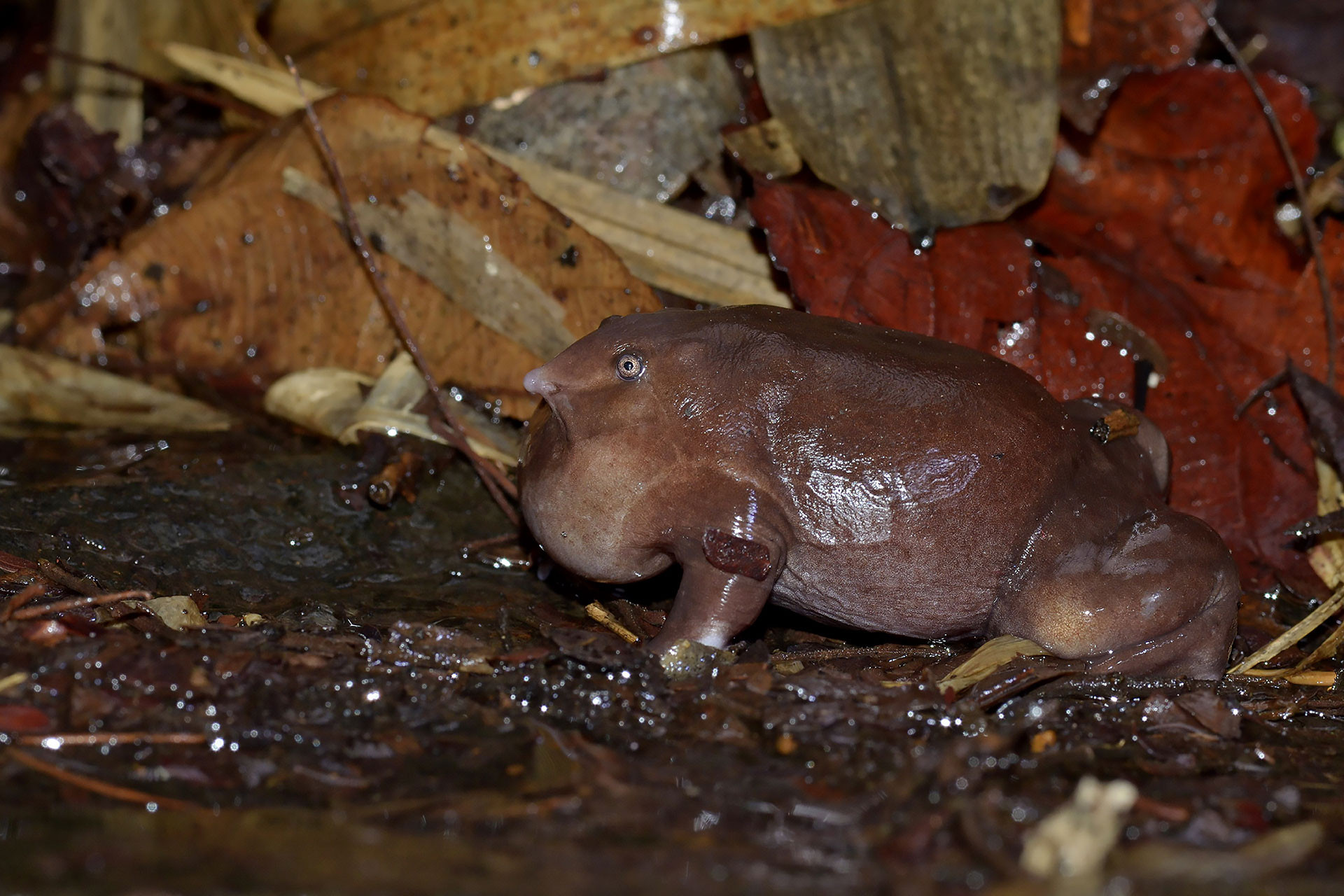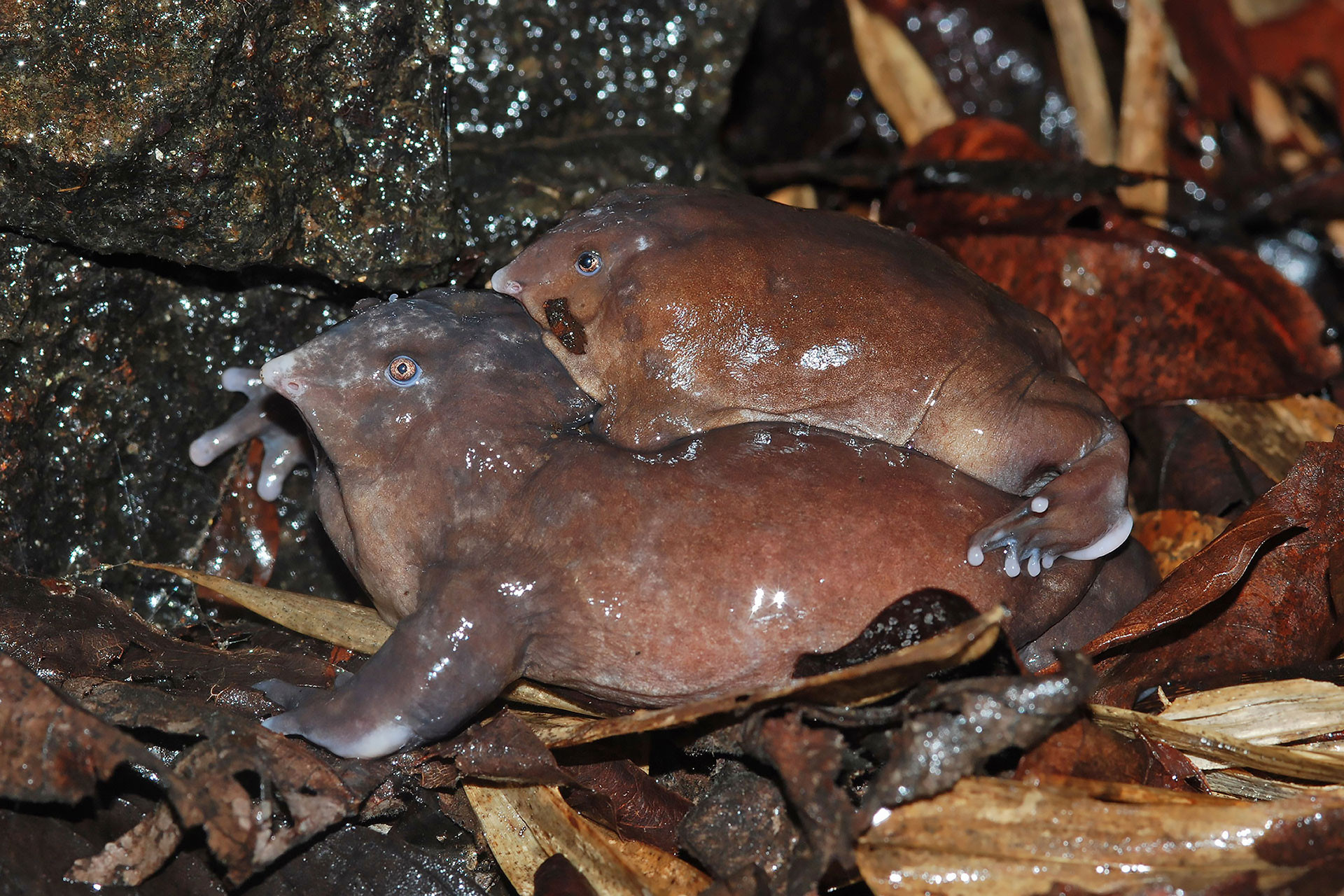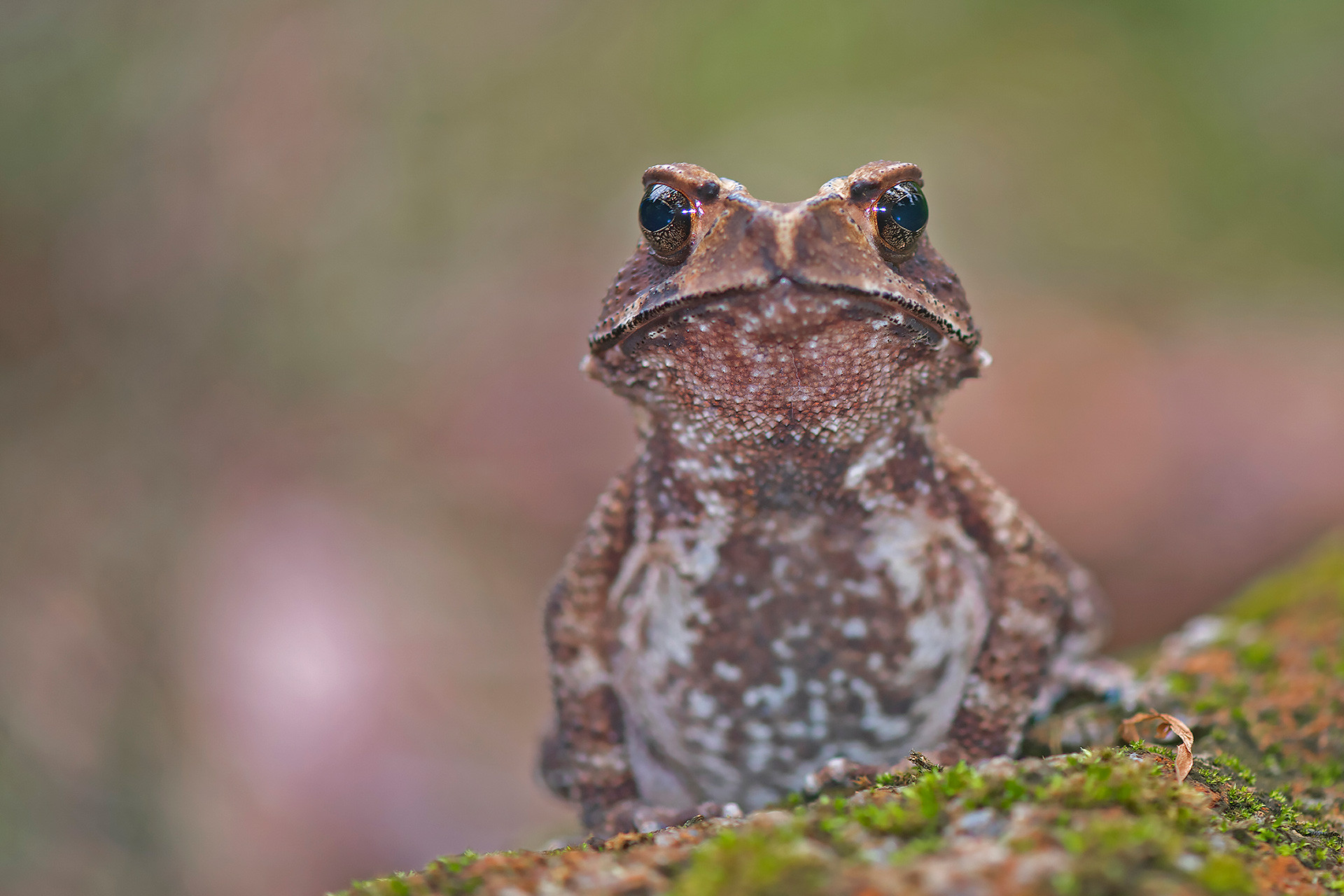This is the third story in a series of articles on the Western Ghats—covering everything from elusive frogs to majestic birds to hidden ancient forests.
The first time the name Nasikabatrachus sahyadrensis caught my attention was in 2006, three years after its formal description, when my professor, Jain J Therattil, read it out loud from the Chordate Zoology textbook. The Purple Frog is a living fossil with a long evolutionary history, evidence of the Gondwanaland hypothesis, described from Idukki, Kerala (my home state), by S D Biju and Franky Bossuyt in 2003. When I saw my first Purple Frog, a rescued individual in an aquarium, little did I know that I would be dedicating the next ten years of my life to the conservation of this animal.
It has been a decade and more since we started studying the Purple Frog, and we've come a long way from when we started. It took us so many years to understand this curious amphibian. Slowly but surely, we started putting the puzzle together. Still, we know very little about them, and the little that we know is of the brief period when they are above ground. A matter of just a couple of hours every year, along with their mates to lay eggs. Then once again, back to the underworld! Even now, we don't know anything about their life underground. Yes, it's a superstar among amphibians. But, how many people know about them?
India is home to more than 470 species of amphibians, a high percentage of which is endemic to the region. One such hotspot in terms of amphibian diversity is the Western Ghats, especially the southernmost part. More than ninety per cent of the 252 amphibian species seen in the Western Ghats are found nowhere else in the world.
Despite all the significant amphibian wealth in the region, these animals hardly receive any public attention, unlike the larger charismatic mammals. Even among nature enthusiasts, it is only recently that people have started paying them notice. For the general public, frogs are ugly-looking, creepy croakers with slimy or warty skin that sometimes take refuge in their shoe racks, bathrooms or gardens. For the common person, frogs and toads, nature's best pest control agents, are just ‘good for nothing’ animals. The fact that a frog's diet consists of a diverse set of insects is seldom appreciated. When trying to seek the attention of policymakers or the public to protect an area for its amphibian diversity or an individual species, one always receives a baffled look. Without addressing this, we cannot successfully conserve a species. Especially a species like the Purple Frog, which is largely distributed outside the protected area network. It was at this juncture that we realised how generating awareness is as important as research in conservation.
The Purple Frog is popular among the indigenous and local people in its habitat. They have many local names for the species, including different names for the sexes (Kuravan and Kurathi). In fact, the local ecological knowledge is profound, but that's not the case with the larger public. As a part of the Evolutionarily Distinct and Globally Endangered (EDGE) Fellowship Project, we wrote numerous popular articles and directly engaged with the general public through workshops and awareness programmes. Specific outreach activities such as interacting with drivers plying the roads in Nelliyampathy and Idukki in Kerala, where Purple Frogs often end up as roadkill during the breeding season, were conducted. The numbers of dead individuals and amplectant pairs found were far more than the live animals seen in those years. Unfortunately, this will be the case in many other places where roads bisect Purple Frog habitats.
Our outreach activities went on for years. It helped create interest among the people who live with Purple Frogs, but at the same time, we realised that we need better strategies to reach the masses. And, we had seriously started thinking about what more can be done to increase the profile of the species. During the EDGE conservation tools course, we learned about the legendary primatologist Dr Patricia Wright’s journey to conserve the lemurs of Madagascar and how she involved the local leaders to make the species more popular among the public. We found her story inspiring, and though the quest for involving local leaders and public figures did not reach anywhere, we struck gold along the way.
The surfacing of the Purple Frog from the underworld for a day every year exactly resembled a Hindu mythological character, King Mahabali, who is intrinsically linked with Kerala’s biggest festival of Onam. Our artist-designer friend Abhilash Chacko made an excellent poster depicting the Purple Frog as King Mahabali, wishing the people of Kerala a happy Onam. The poster was released during the festival season in 2017 and that gave a huge boost to the profile of the species. The following season we received numerous calls on sightings and information on several new locations. Linking this bit about the natural history of the species with a widely celebrated festival made a huge difference. The Purple Frog made it into several textbooks and popular media. A large portion of the people in Kerala where the majority of the species habitat is found now knows the frog very well. In fact, the name ‘Mahabali Frog’ is now congruently used along with Purple Frog.
In November 2018, the Kerala state government decided to declare the Malabar Banded Peacock (Papilio buddha) as the state butterfly of Kerala. That’s when I thought, why not a state amphibian as well? Obviously, there was no better choice for the title than the Mahabali Frog. But the State Wildlife Advisory Board of Kerala would require strong justifications as to why the Purple Frog should be the state amphibian. With the help of my supervisor Dr P S Easa, I drafted and submitted a proposal, highlighting the importance of designating the Mahabali Frog as the state amphibian out of the 180 plus species found in Kerala:
- Bizarre-looking species that is easy to recognise
- Endemic to the Western Ghats with a majority of the distributional range within Kerala itself
- Of cultural significance, similar to the mythical King Mahabali in appearing above ground once a year for a single day
- Of evolutionary significance, a living fossil that lends to the Gondwanaland hypothesis
- One of the most popular frogs in the world, ranked number 3 on the EDGE list of amphibians
- Marked as 'Endangered' on the IUCN Red List
- A habitat preference for seasonal streams makes the frog an umbrella species for aquatic ecosystem conservation in the Western Ghats
The proposal is still pending, but if accepted, the Purple Frog will be declared the ambassador for amphibian conservation in Kerala.
The last two years saw no evidence of Purple Frog roadkill in areas under surveillance, as there were no vehicles on the road with much of the human world impacted by the pandemic. But the changing climate is another problem for these animals. Purple Frog tadpoles have highly suctorial mouthparts that help them withstand heavy torrential rains, but when the rains come early, the tadpoles wouldn't have hatched yet, and the frog eggs get washed away. Delayed rains cause more damage whereby the egg-laying sites/pools in the stream dry up. Climate change is not something affecting the Purple Frog alone, but a considerable hurdle for all of the earth's biodiversity.
Watch the mini-documentary on the Purple Frog here:










